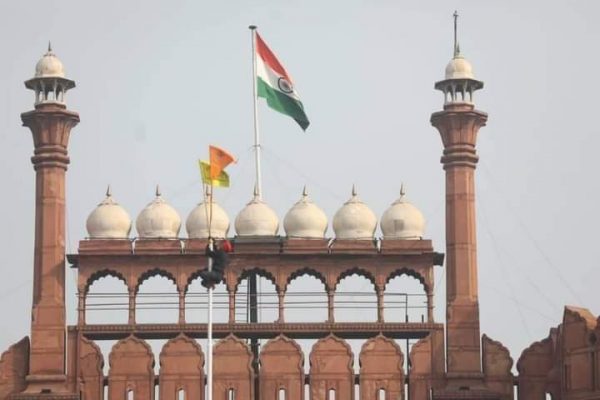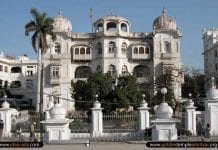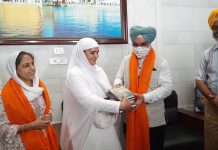


As India celebrates its annual republic day with an official parade and celebrations, there is no doubt that the tractor march carried out by farmers was not historic. The day started with the farmer activist using the hashtag #historictractormarch. Several other hashtags hit Twitter throughout the day, including #TractorsVsTraitors, #FarmersProtests, and #TractorPrade, but one hashtag that gained much attention is #GodiMediaStopMisleading.
The tractor was a much-needed effort by the farmers to raise awareness of their plight. Farmers have been camping amidst cold weather on the highways leading to Delhi. Over 100 protestors have lost their lives. Their struggle to repeal the three anti-farm laws, however, has fallen on deaf ears.
During the entire tractor march, pro-State media attempted to hijack and undermine the farmers through propaganda. Sikh24 presents some of the top misleading facts by Indian media –
5. Farmers damaged DTDC buses at ITO
Shortly after the official R-Day celebrations were over for India, several pro-Indian channels finally shifted their focus towards the tractor march. Instead of highlighting the march’s intensity, the media cast its attention towards an incident where a DTDC bus was vandalized.
Fact: Volunteers at the march caught 13 persons with Government IDs who had vandalized the buses and handed them over to the police. What happened at ITO was that when farmers were approaching the area, buses were already being damaged. Farmers were quick to nap suspicious persons and handed them over to the police.
4. Farmers attacked the policemen
Many police officials were injured, including a woman constable at the Red Fort.
Fact: The reality is that many farmers also assisted police officers and took them to safety. With such a large number of attendees and the police resorting to using tear gas and water cannons, several protestors did leash anger towards the police. Still, many farmers intervened quickly and made sure no untoward incident took place.
3. Protestors used force and violence to enter Delhi
The traffic police had given a specific route to the farmers, not including the Outer Ring Road.
Fact: Farmers had earlier asked the police to remove the barricading and allow them to proceed with the march peacefully. Despite early appeals to the officials, barricading was intensified, with police using trailers and busses to stop the protestors. Before the rally took off, farm union leaders and activists had been appealing to the attendees to remain peaceful at all costs. However, police resorted to tear gas and means of violence against the protestors. In many cases, it lathi-charged the elderly and dragged drivers off of their tractors. Police attacked one farmer (reportedly with a tear gas capsule). He lost control of his tractor and died on the spot.
2. Anti-BJP parties sponsored the farmers, and they came prepared with cranes to uproot the barricades
During the live broadcasts, Indian national media showed visuals of cranes being used to remove barricades.
Fact: The cranes belonged to the Delhi administration. When farmers were approaching the Outer Ring Road, they were ruthlessly lathi-charged and attacked with tear gas. Infuriated farmers, many of who were marching by foot, took over the tear gas vehicle, and later, one of the cranes used it to remove the barricades. Cranes were not officially part of the march that took off from Singhu.
1. India’s tri-color was removed from the Red Fort by Khalistan supporters
Red Fort has been taken over by the farmers, who have removed the tiranga and installed the Khalistan flag in place.
Fact: While the activists did hoist the Sikh Nishan Sahib (emblem flag) and a kisan protest flag, the India tri-color was not removed. This incident has been the most immense propaganda by the State-sponsored media, which cropped out the Indian national flag and showed a Nishan Sahib’s hoisting by a Sikh activist. National media presented this news as a takeover of the Red Fort by the farmers; however, this was far from it.
Many Sikhs rejoiced to see the Nishan Sahib atop the Red Fort. It reminded them of many historical times when the Khalsa forces captured Delhi, and the Nishan Sahib was installed at the Red Fort as a symbol of victory over the Mughals.
This is a lie. Tiranga has not been supplanted. The mast where Nishan Sahib was hoisted was empty. pic.twitter.com/7319IKQ6vx
— Aditya Menon (@AdityaMenon22) January 26, 2021
Media people, now look at the picture, the policeman was injured and still the farmer heroes helped the policeman. Be the son of a farmer.Share this photo so that the media can see why the government is not so bad.Showing marketable media#FarmersProtest #GodiMediaStopMisleading pic.twitter.com/eKVB7Mx670
— ਜਸਵੰਤ ਸਿੰਘ ਢਿੱਲੋਂ (@Jassdhillon5181) January 26, 2021
Nihang Singh protecting lady police officer during clashes between farmers and police at Red Fort.
Why not showing this on ur esteemed news channels?#GodiMedia #GodiMediaStopMisleading pic.twitter.com/Nuz2Ak2xjM— ਪ੍ਰਭ (@hpsingh9909) January 26, 2021




